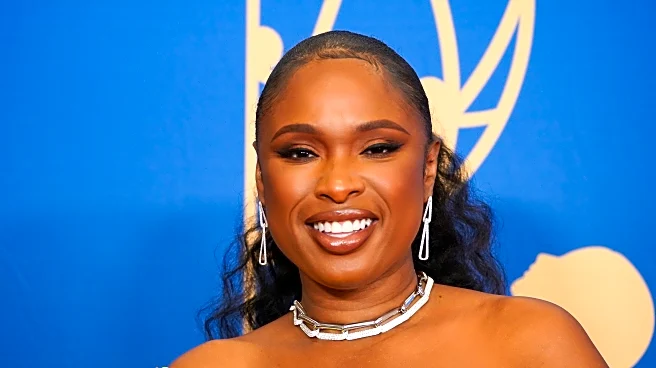What's Happening?
The 2025 Daytime Emmy Awards took place on October 17 at the Pasadena Civic Auditorium in Pasadena, California. This year's event marked a significant shift as it was not broadcast on traditional television
networks. Instead, the ceremony, hosted by Mario Lopez, was available for streaming on the National Academy of Television Arts & Sciences website and The Emmys app. The event celebrated the achievements in daytime television, with notable appearances from stars of popular shows such as The Young and the Restless, General Hospital, and Days of Our Lives. Deborah Norville received the Lifetime Achievement award, highlighting her three-decade tenure as the anchor of Inside Edition.
Why It's Important?
The decision to move the Daytime Emmys to a streaming-only format reflects broader trends in media consumption, where digital platforms are increasingly favored over traditional broadcast methods. This shift could influence how award shows are produced and consumed in the future, potentially reaching a different demographic that prefers online content. However, it may also limit access for audiences who rely on traditional TV, impacting overall viewership numbers. The change underscores the evolving landscape of television and media, where streaming services are becoming dominant players.
What's Next?
As the Daytime Emmys adapt to a streaming format, other award shows may follow suit, especially if this model proves successful in terms of audience engagement and cost-effectiveness. Stakeholders in the television industry will likely monitor the outcomes closely, considering potential adjustments to their own broadcasting strategies. The shift may also prompt discussions about accessibility and inclusivity, ensuring that audiences without internet access are not left behind.
Beyond the Headlines
The move to streaming could have long-term implications for the television industry, including changes in advertising strategies and sponsorships. As more events transition online, there may be increased opportunities for interactive and personalized viewing experiences. Additionally, this shift could influence content creation, with producers focusing on digital-first strategies to cater to online audiences.












